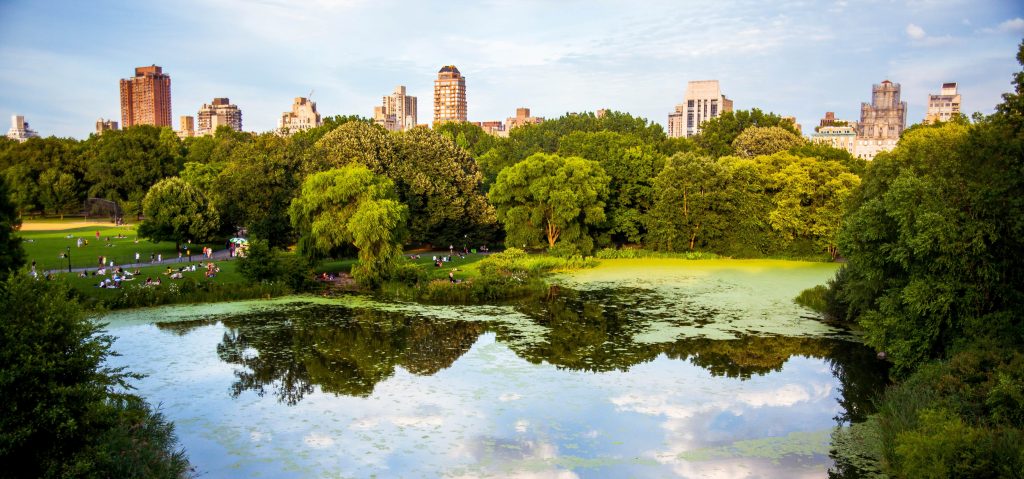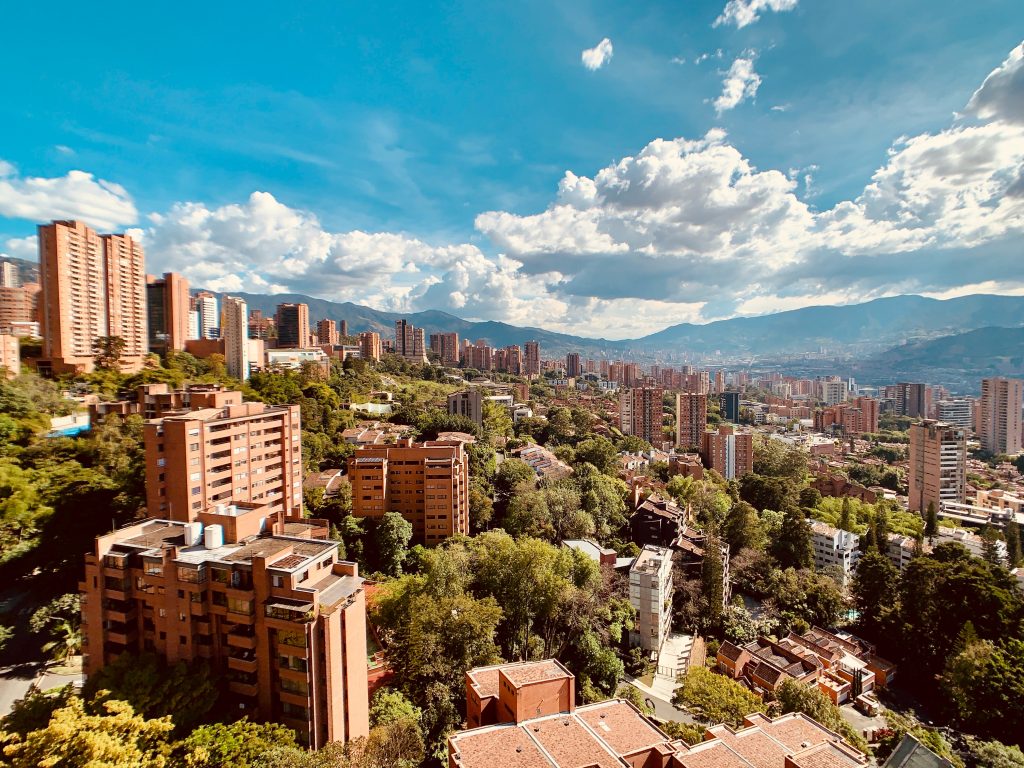
Urban forests promote greener and healthier cities, but their implementation still face many challenges.
The term urban forest refers to all the tree and shrubs present in urban areas, including trees in yards and in the streets, protected green areas, and urban or linear parks. Urban forests are the most evident form of green infrastructure in cities. Green infrastructures are natural and semi-natural infrastructures that provide ecosystem services, such as air pollution abatement or stormwater management.
What are the benefits of urban forests?
Urban forests can have a positive impact on cities and, especially, their population. They can contribute to the physical and mental health of people by creating spaces for physical activity and buffering stress. In addition, they can improve air quality, by removing harmful pollutants, as well as reduce noise. From a social point of view, urban forests can support local livelihoods, enhance community cohesion, increase food security for marginalized communities, promote urban residents’ connection to nature, and enhance equity. For example, small land areas repurposed in pocket parks with trees and seating can become space for social interaction.
On the other side, urban forests can also be beneficial for the urban ecosystem. In particular, they can mitigate the heat island effect, improve the water infrastructure, intercept rainfall and surface runoff to reduce erosion and sedimentation, enhance agricultural production in urban and peri-urban areas, and increase property values. Urban forests can even improve traffic and reduce driver speeds if properly incorporated along streets. In this regard, trees can have an important role in a “complete streets” policy. “Complete streets” are a transportation policy and design approach that requires streets to be planned and designed to enable safe, convenient and comfortable travel. Urban forests can help the achievement of these objectives by reducing air temperature, providing shade, and in some cases protecting commuters form environmental and safety hazards, such as pollution. Some cities have already started to implement the use of trees in a strategic way. For example, the city of Medellin in Colombia has obtained positive results with the adoption of such policies. They were able to achieve a decrease in the temperature of the corridors by 2-3°C, improving the every-day travel of 1 million people.

What kind of challenges do urban forests face?
Urban forests face multiple types of challenges. First, urban trees grow in difficult conditions – they are constantly exposed to pollutants, high temperatures, drought and inundation, and the limited space they have to grow roots increase susceptibility to insects and diseases. Secondly, limited resources often hinder the proper maintenance of urban forests, which needs the participation of multiple stakeholders and the collaboration of municipal governments. Third, encroachment from development often results in loss of urban forests and green spaces. Finally, the lack of public understanding on the benefits of urban forests also challenges their promotion. In particular, urban trees are often considered as a financial burden or risk, and the benefits they provide are underestimated. In relation to this, urban forests’ implementation still face a lot of barriers from a policy point of view. One reason is that cities face multiple urgent priorities, such as affordable housing or safe transportation, leaving the improvement of green spaces at the bottom of the list. Another one is that often municipalities lack of technical skills and resources they need to manage urban forests. In connection to this, tight budgets and limited investment interest also represent a big challenge for the development of urban forests. Despite the potential economic and social benefits, cities fail to recognise the true value of urban forests, which are often considered as an amenity.
In conclusion, urban forests seem to provide important benefits for cities and their populations, especially in relation to risks connected to climate change, such as heat waves, floods or droughts. However, it is important to note that the benefits and challenges listed above can vary from city to city. Climate, geography, and even cultural or individual preferences can affect the benefits provided by urban forests. Planning and implementation need to be inclusive and to understand which services communities need and want. In particular, the involvement of all relevant stakeholders is fundamental to accomplish consistent results.
This article is based on the Cities4Forests guide “Urban Forests for Healthier Cities: Policy, Planning, Regulations, and Institutional Arrangements”. You can download the full guide here.